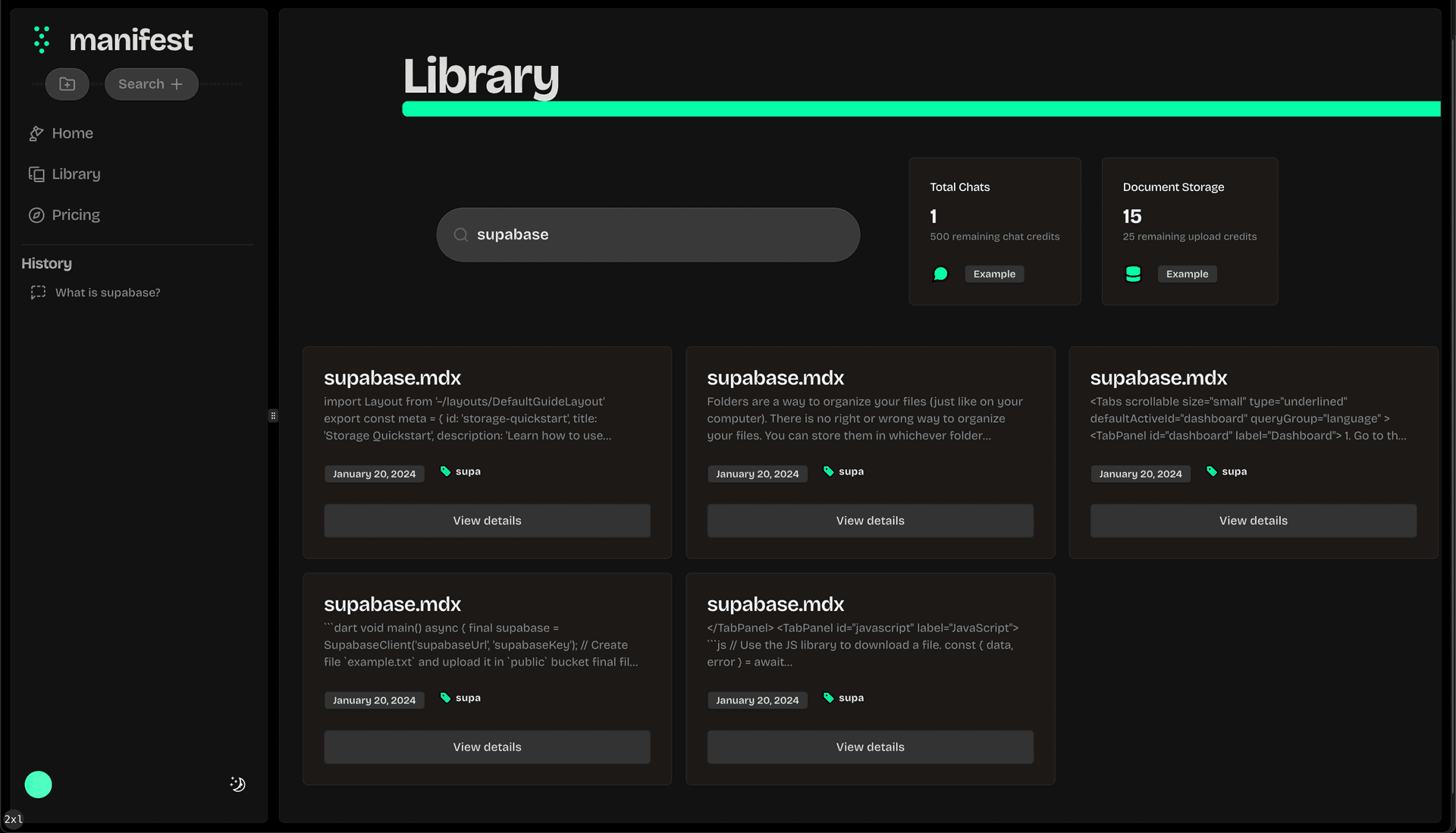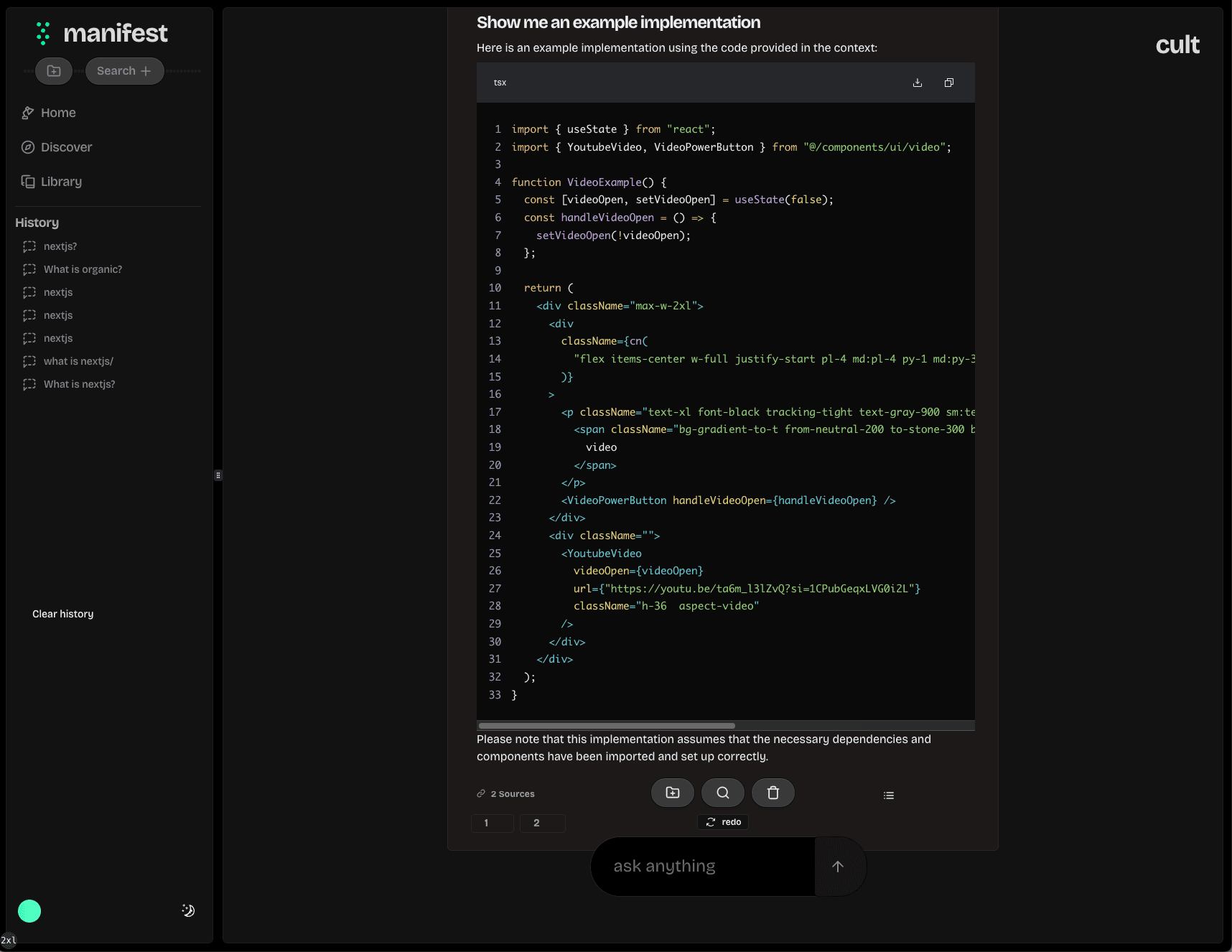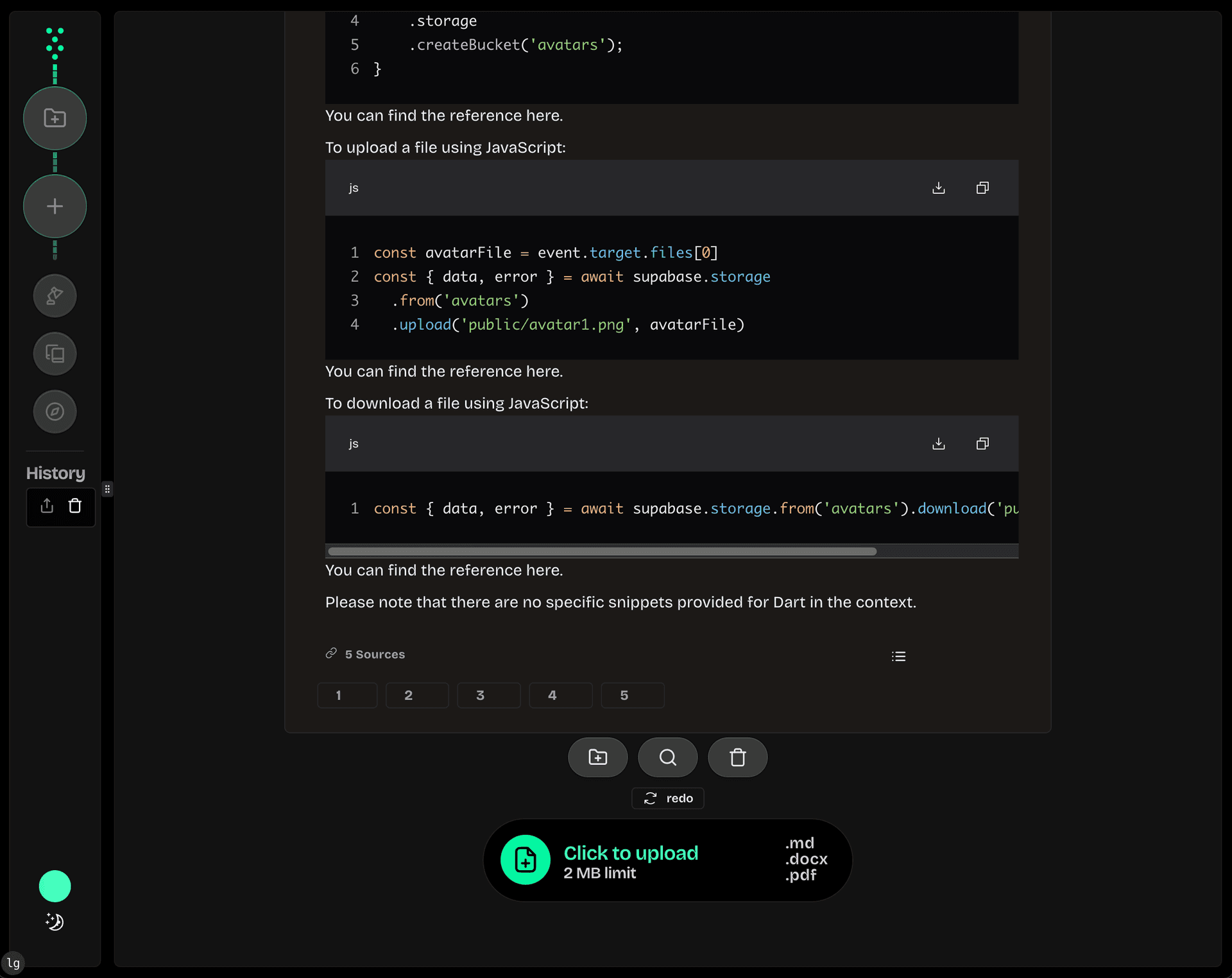Manifest
Vector embeddings and RAG retrieval. Build Perplexity-style AI apps that deliver context-aware responses with real-time source citations. Perfect for creating next-gen search engines, content recommendation systems, and AI-powered knowledge bases.
Vector Embeddings Storage
RAG Implementation
Supabase Integration
Next.js
Tailwind CSS
Supabase
Open AI

Key Features
Vector Embeddings Storage
Implement efficient storage and retrieval of vector embeddings using Supabase's pgvector extension for PostgreSQL.
RAG Implementation
Develop a Retrieval-Augmented Generation system using OpenAI's API and vector similarity search for context-aware AI responses.
Supabase Integration
Leverage Supabase for user authentication, database management, and real-time subscriptions in a serverless architecture.
App Screenshots


